Alternatives to South Florida Avenue 'Road Diet' offered. Will they work?
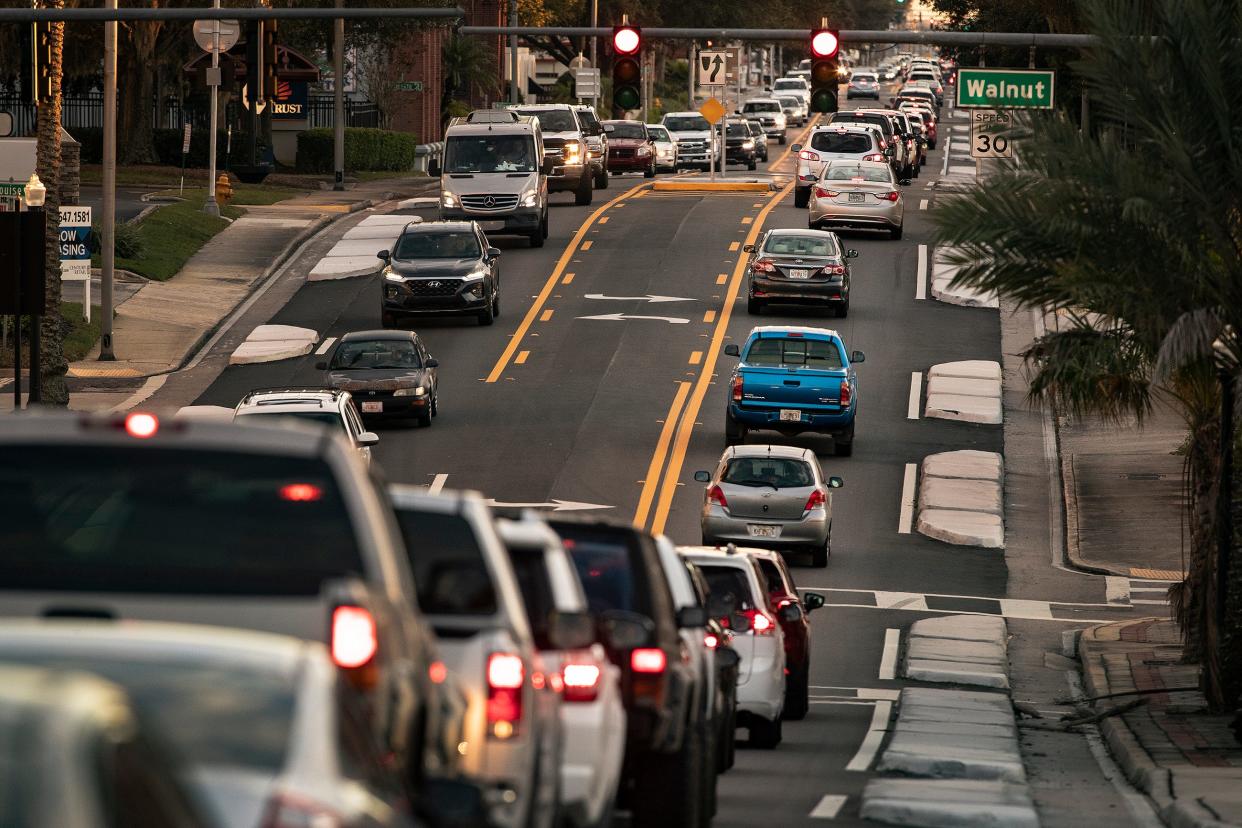
LAKELAND — A consultant has offered Lakeland officials 10 alternatives to the current South Florida Avenue 'road diet' configuration to sort through and determine which, if any, could work.
Ayres Associates has provided the city with a draft report of a South Florida Avenue Strategic Master Plan. The Tampa-based engineering consultant was hired for $57,700 in February by the Lakeland Community Redevelopment Agency and given 14 weeks to study the area.
Previously: FDOT, city launch interactive survey of South Florida Avenue 'road diet'
Related: Officials seek feedback beyond 'love it' or 'hate it' on South Florida Avenue 'road diet'
"The purpose of this study is to provide planning and design guidance for the long-term redevelopment of this corridor into a vibrant part of the city," reads the report. "It is designed to provide the City’s staff and decision makers an overall assessment of the current context, previous studies undertaken, and fresh ideas to make decisions related to the corridor."
The Florida Department of Transportation's 'road diet' sought to fundamentally change a non-conforming state road from five lanes down to three lanes — one travel lane each direction and a center turning lane — over a roughly one-mile stretch from Lime Street south to Ariana Street.
FDOT and Lakeland officials have been seeking public feedback via an online survey. Residents, business owners and visitors are being asked to complete a brief five-part survey online at metroquestsurvey.com/qn1i1c.
A public forum will be held July 11 from 5-7 p.m. at the Sikes Hall inside the RP Funding Center, 701 W. Lime St in Lakeland. Public comments will be taken on the road diet.
Ayers' study found residents have "negative perceptions of the road diet, specifically delays and congestion" while still leaving "inadequate parking" for the area. Other concerns cited include property access concerns and lack of economic development.
The consultants suggested 10 possible road configurations by focusing on five elements:
Whether the road should have two lanes or four lanes
If a center median should divide oncoming traffic
Additional roadside parking is desired
Whether bicyclists share the road, sidewalk or have a dedicated bike lane
If bus bays should be built in to facilitate public transit
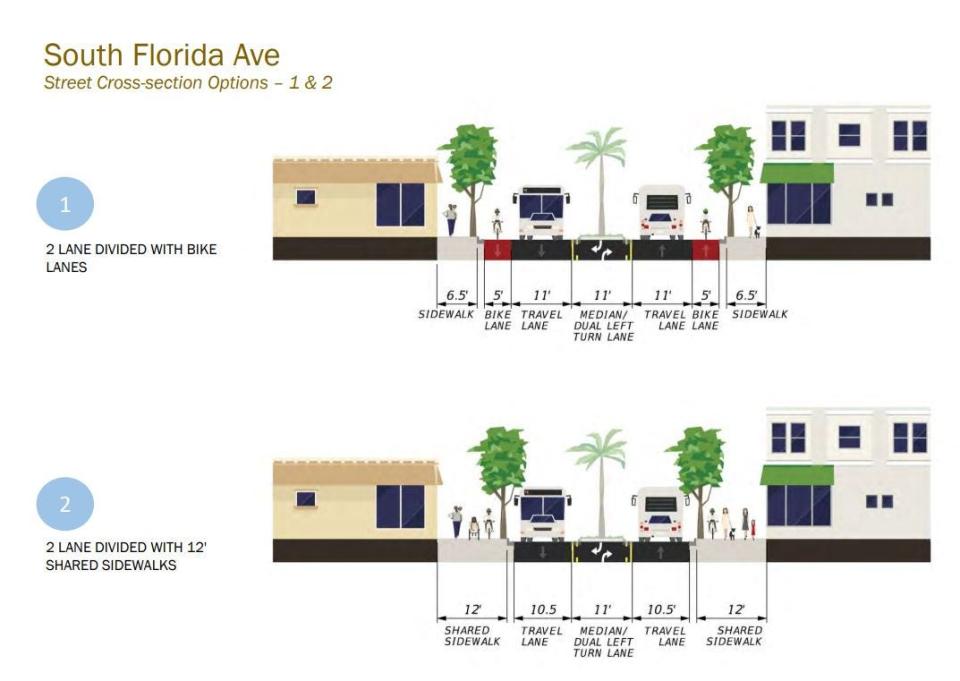
A quick review of the designs shows that:
Seven designs suggest a two-lane road versus a four lanes
Roughly half the options include a center median
Three options have dedicated bike lanes
Three offer additional roadside parking
Three road designs would incorporate bus bays for public transit
Many of these design options have seen previous opposition from city staff and Lakeland's transportation leaders who have expressed concerns about how various traits could further impact traffic.
Medians may limit access
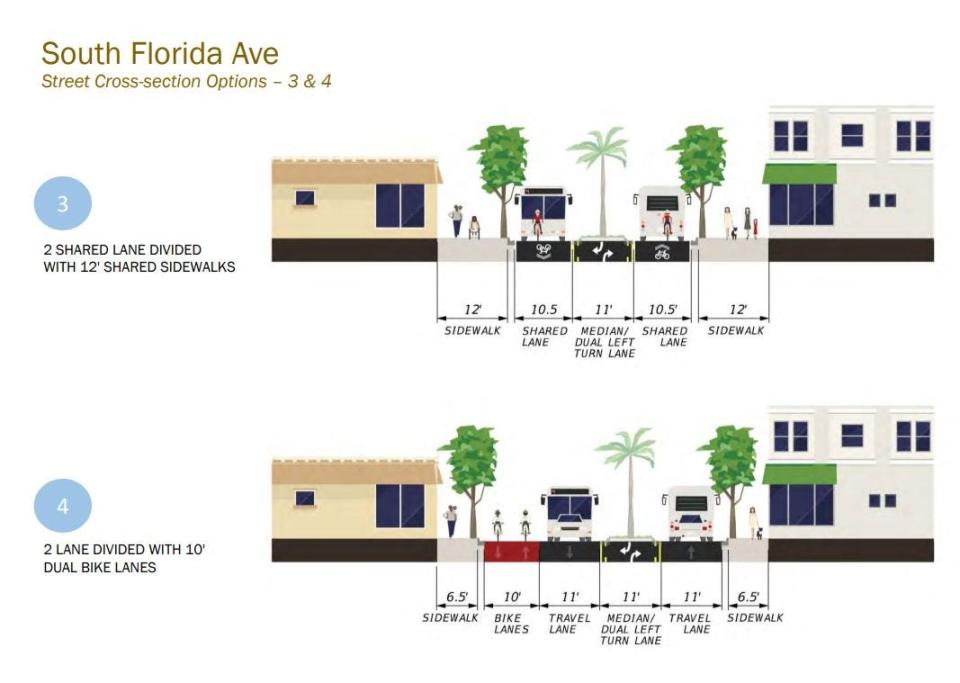
Six road designs proposed by Ayres feature a divided roadway, showing sketches of a divided planted median between lanes of opposing traffic.
Chuck Barmby, Lakeland's planning and transportation manager, previously told The Ledger adding a center median has been considered dating back to the early 2000s. The key issue is considering how a median could potentially block easy access to some businesses and side streets by restricting where vehicles could turn.
"With more medians, there's winners and losers," Barmby told The Ledger in March. "What does that do to the objective of creating a walkable, vibrant economic environment?"
Lakeland officials have been hunting for possible alternatives to the 'road diet' design given the negative critiques.
Return of buses could mean delays
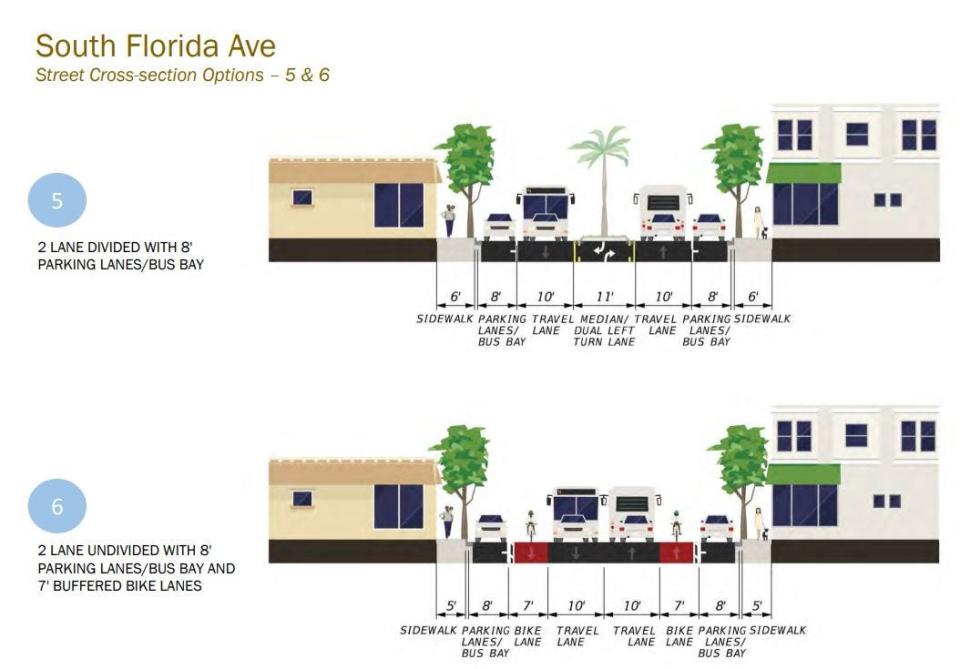
Citrus Connection, Polk County's public transit agency, purposefully removed 14 buses from routes along South Florida Avenue during the 'road diet' to avoid tying up traffic.
It created the Peach Line, the agency's first microtransit line that provides riders a way to get around the Dixieland and downtown areas. The Peach Line has been touted by Tom Phillips, executive director of Citrus Connection, as one of the most successful routes with more than 1,500 riders per month.
In May, the transit agency ran out of grant funding from FDOT to operate the Peach Line. The state agency said it provided money for the original one-year duration of the 'road diet' and would await a further decision on whether the changes would become permanent.
In case you missed it: Roundabout coming to Galloway and Sleepy Hill roads. Intersection to close for up to 60 days
Lakeland commissioners who sit on Citrus Connection's Board of Directors s universally agreed the transit agency needs to encourage FDOT to continue to fund the shuttle versus the alternative — putting public buses back on the two-lane road.
If public buses were to return to South Florida Avenue, each bus stop in the altered section would cause a delay. Phillips said the buses stop an average of 45 seconds for ambulatory riders and up to four minutes for passengers who use a wheelchair to board.
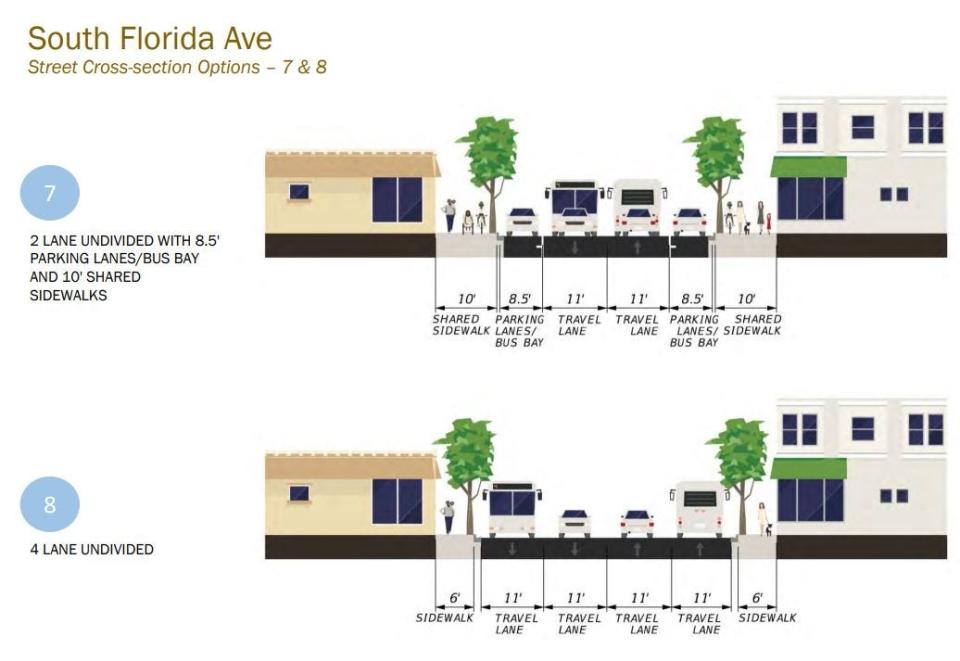
The agency estimates at least 12 wheelchair users use the public transit along South Florida Avenue each day due to the number of senior living and assisted living facilities along the corridor.
That means up to 24 times a day South Florida Avenue may come to a halt for up to 4 minutes as a person utilizing a wheelchair boards or disembarks from a bus.
"FDOT is motivated to want to do that because adding regular buses back to that route is very negative and dangerous to the entire project," Lakeland Mayor Bill Mutz said.
Ayres has suggested three, two-lane road designs that would carve out bus bays to allow vehicles to stop for passengers without holding up traffic. These designs count South Florida Avenue as having two lanes - one traveling in each direction.
Phillips has repeatedly said he doesn't believe two-lane road would allow functional public transit as large buses would likely get trapped at a stop by oncoming traffic, causing routes to be substantially delayed.
"Florida state law requires yielding to a bus entering traffic, but reality is completely different," he said.
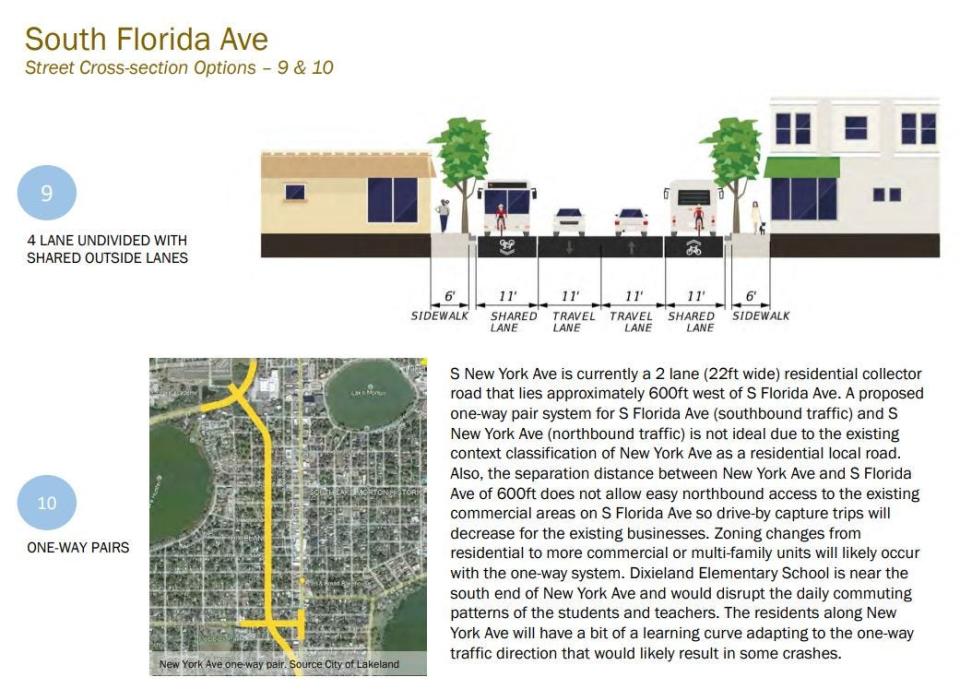
Crossing four lanes would be difficult
The study presents two options to remove the middle turn lane from South Florida Avenue and create a four-lane highway with two travel lanes in each direction.
When city officials started looking at alternatives in March, Barmby told The Ledger he thought this would transform South Florida Avenue into something similar to Lakeland Highlands Boulevard with the same issues. Barmby said he feared vehicles slowing to turn from South Florida Avenue onto a side street or business parking lot would be rear-ended.
It would also be difficult to expect people to walk across four lanes of fast-moving traffic, he said, making the road less pedestrian friendly.
The public forum is scheduled for July 11, after which the Lakeland commission will vote on whether or not to support the road diet as a permanent solution. If the road diet is rejected, FDOT spokesman Andy Orell previously told The Ledger the state does not have any alternative plans drafted for South Florida Avenue.
Sara-Megan Walsh can be reached at swalsh@theledger.com or 863-802-7545. Follow on Twitter @SaraWalshFl.
This article originally appeared on The Ledger: South Florida Avenue needs fundamental change. Consultant gives 10 ideas

